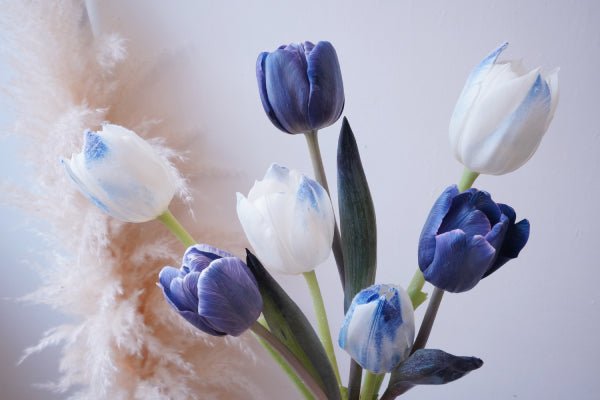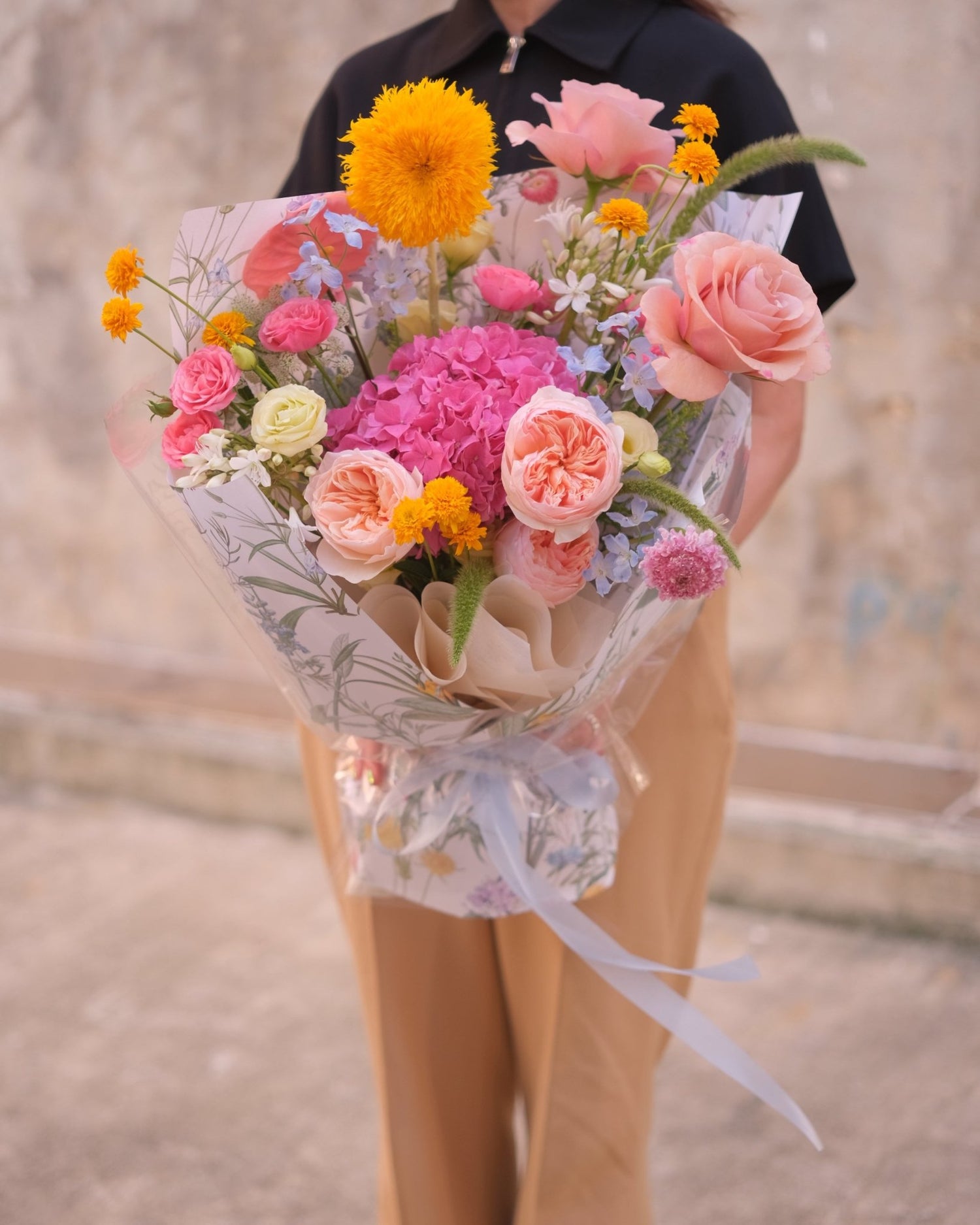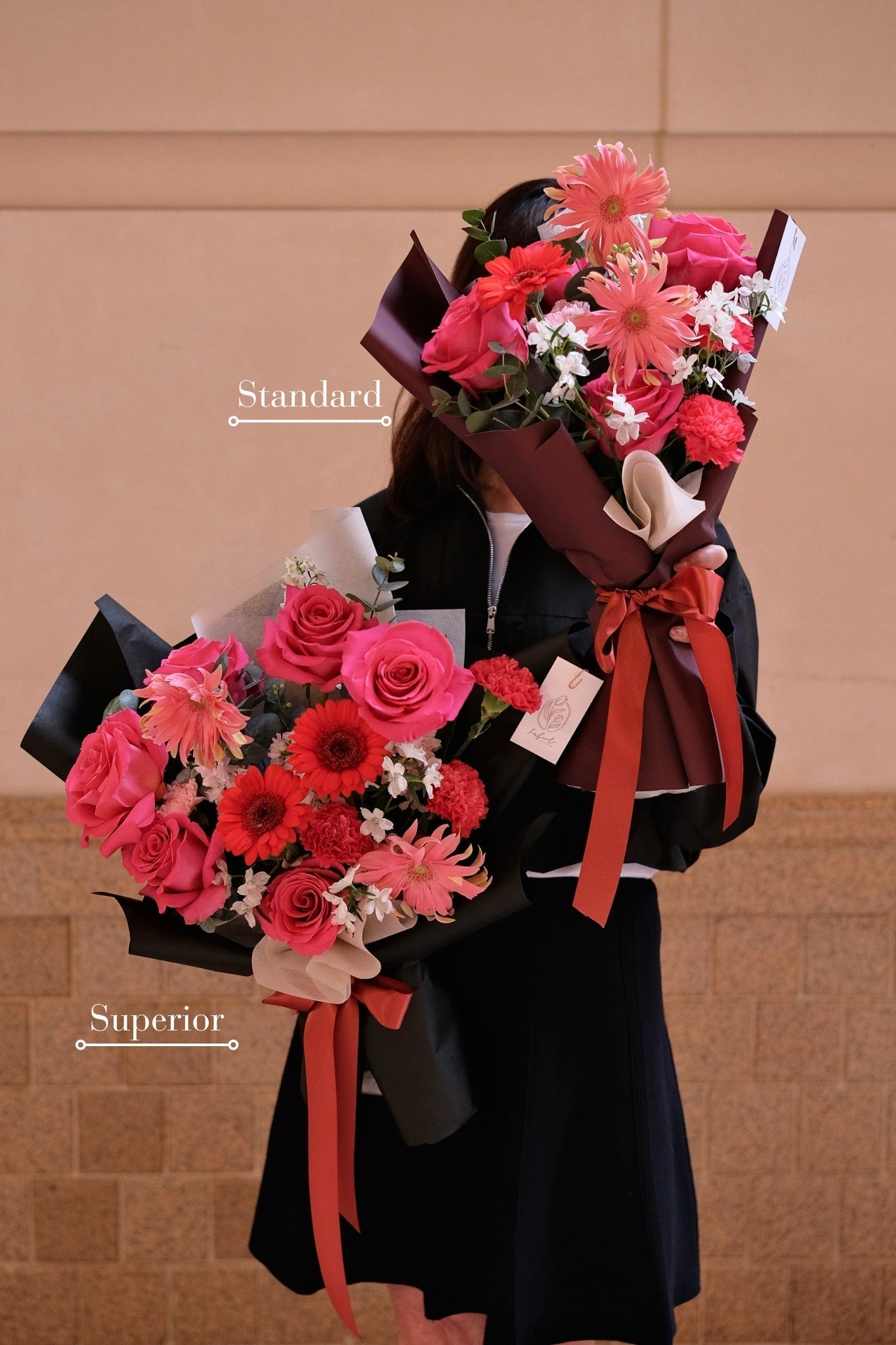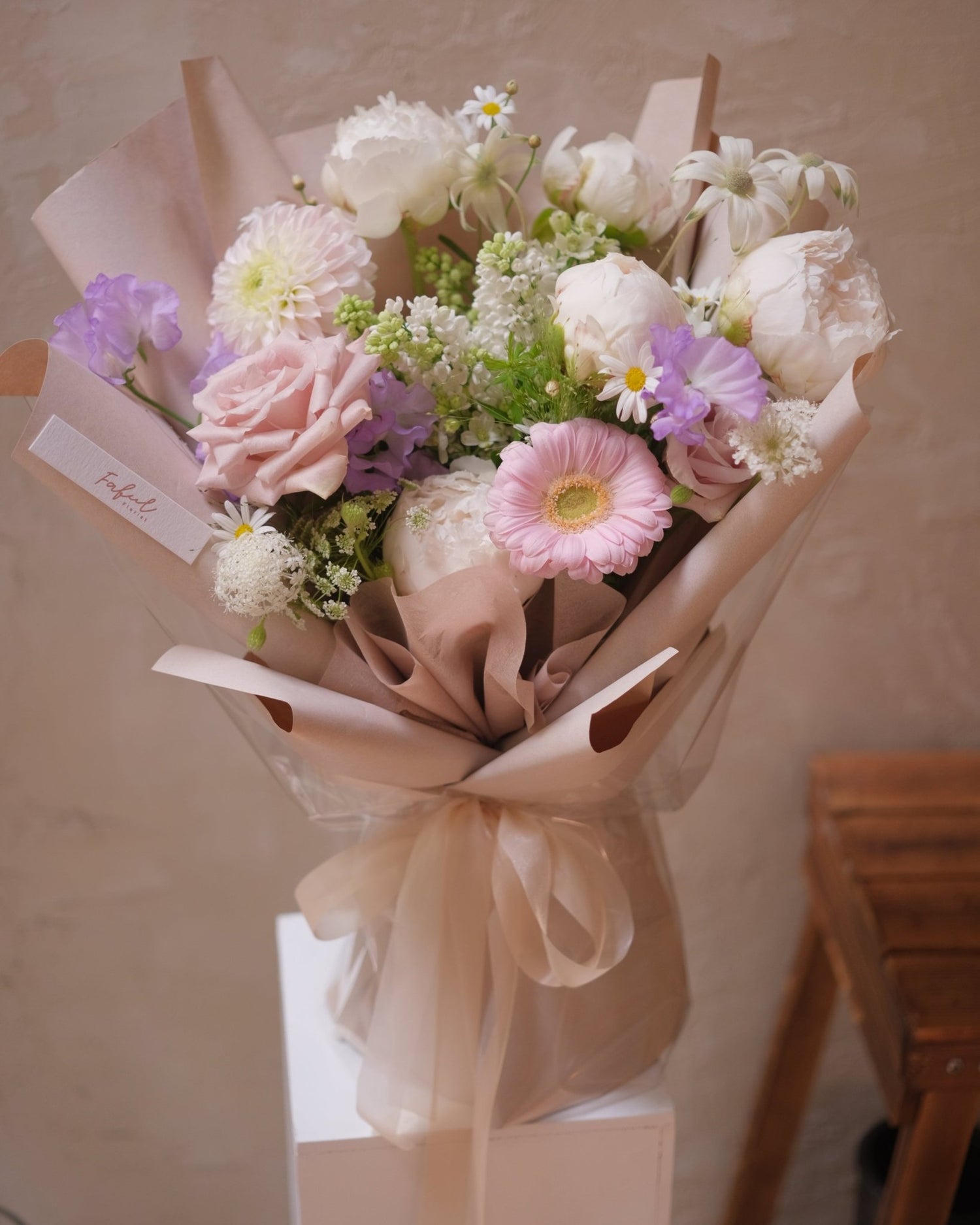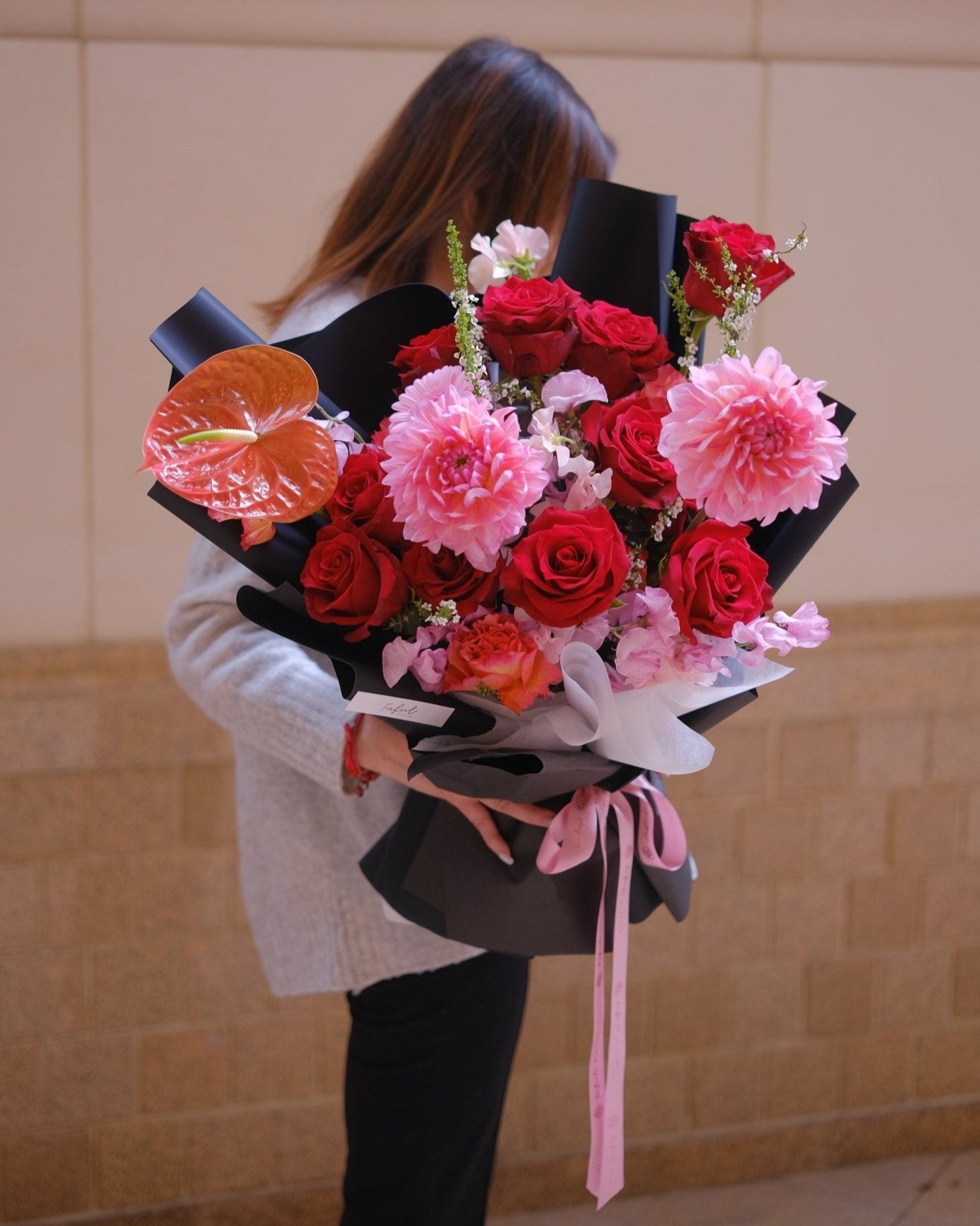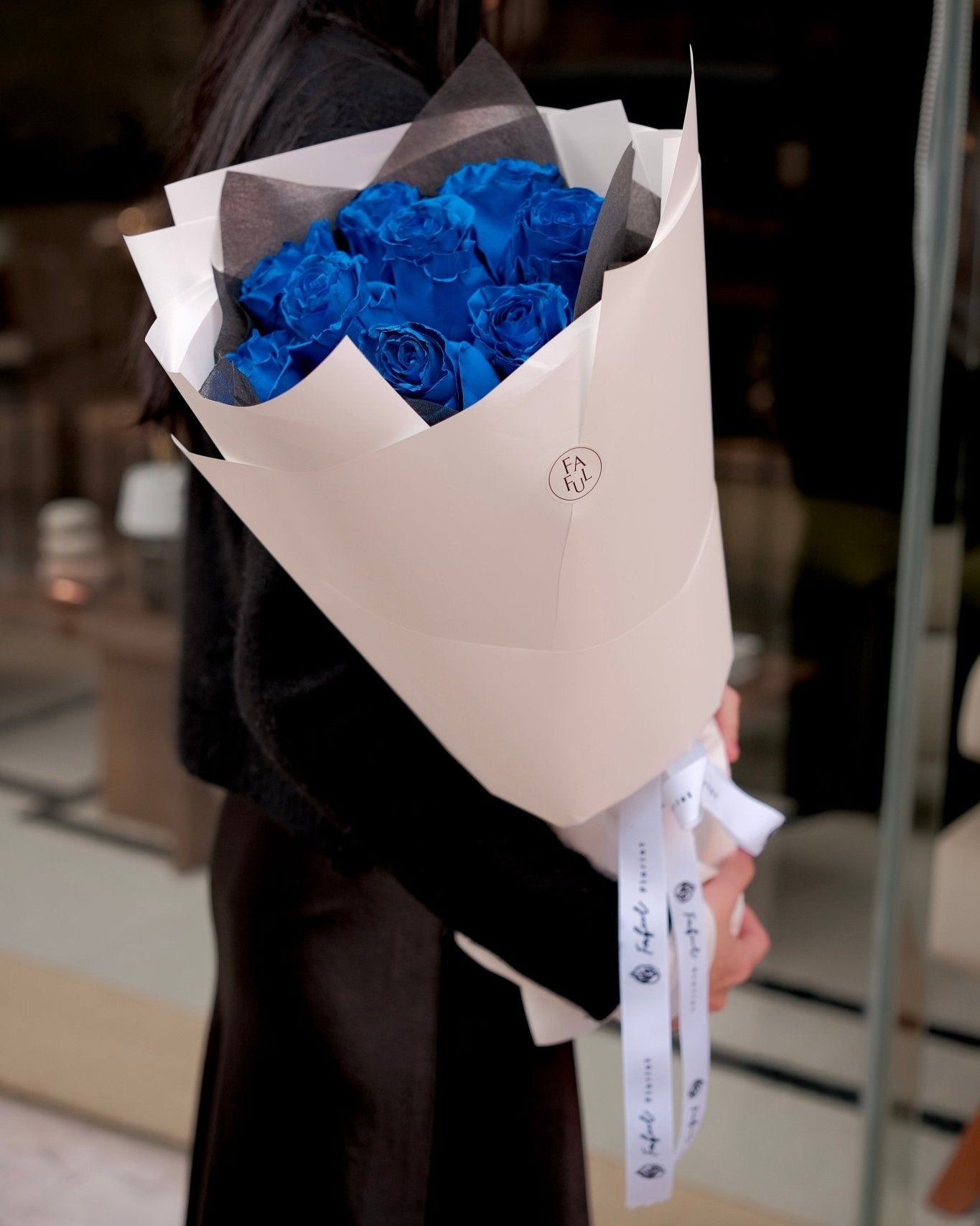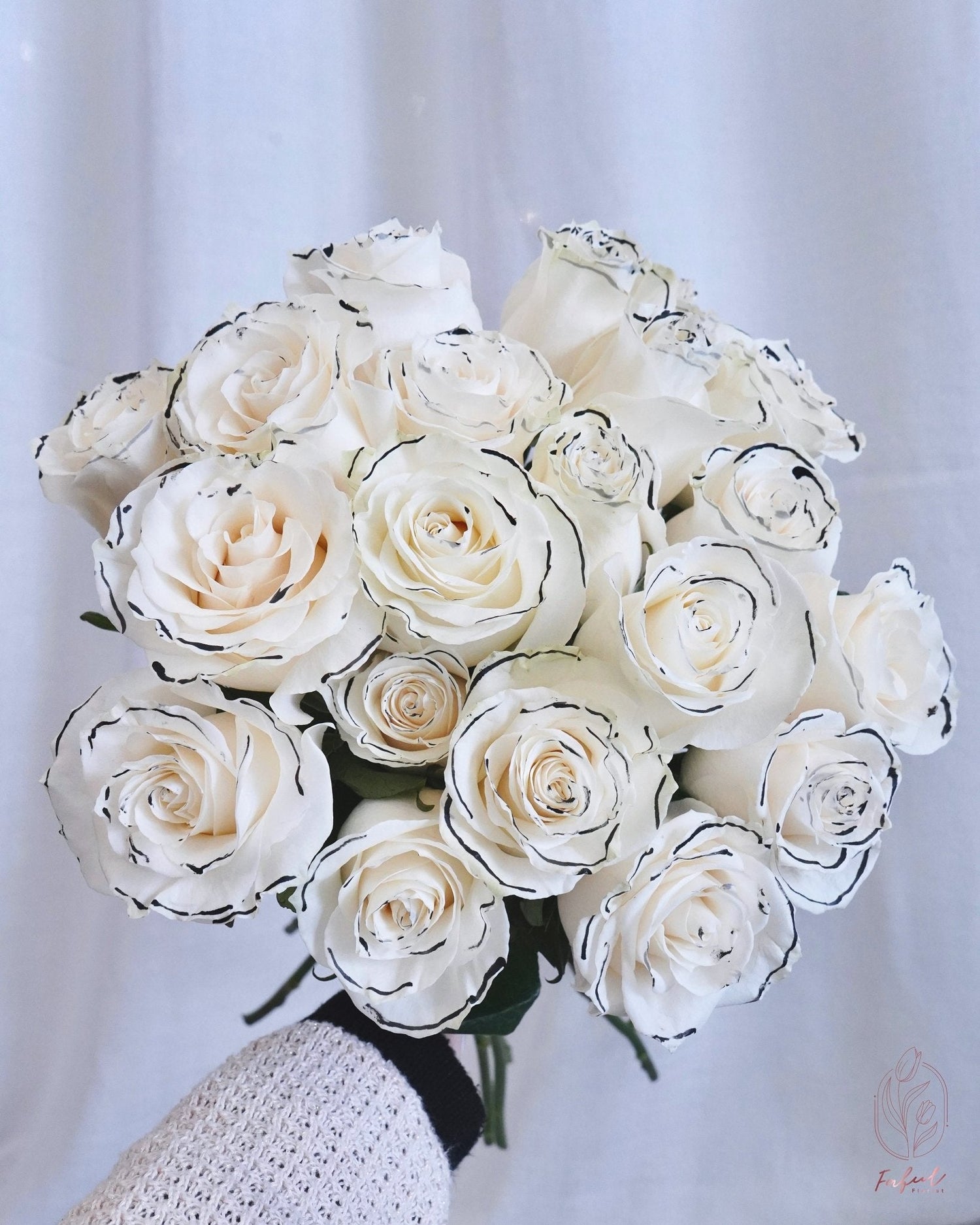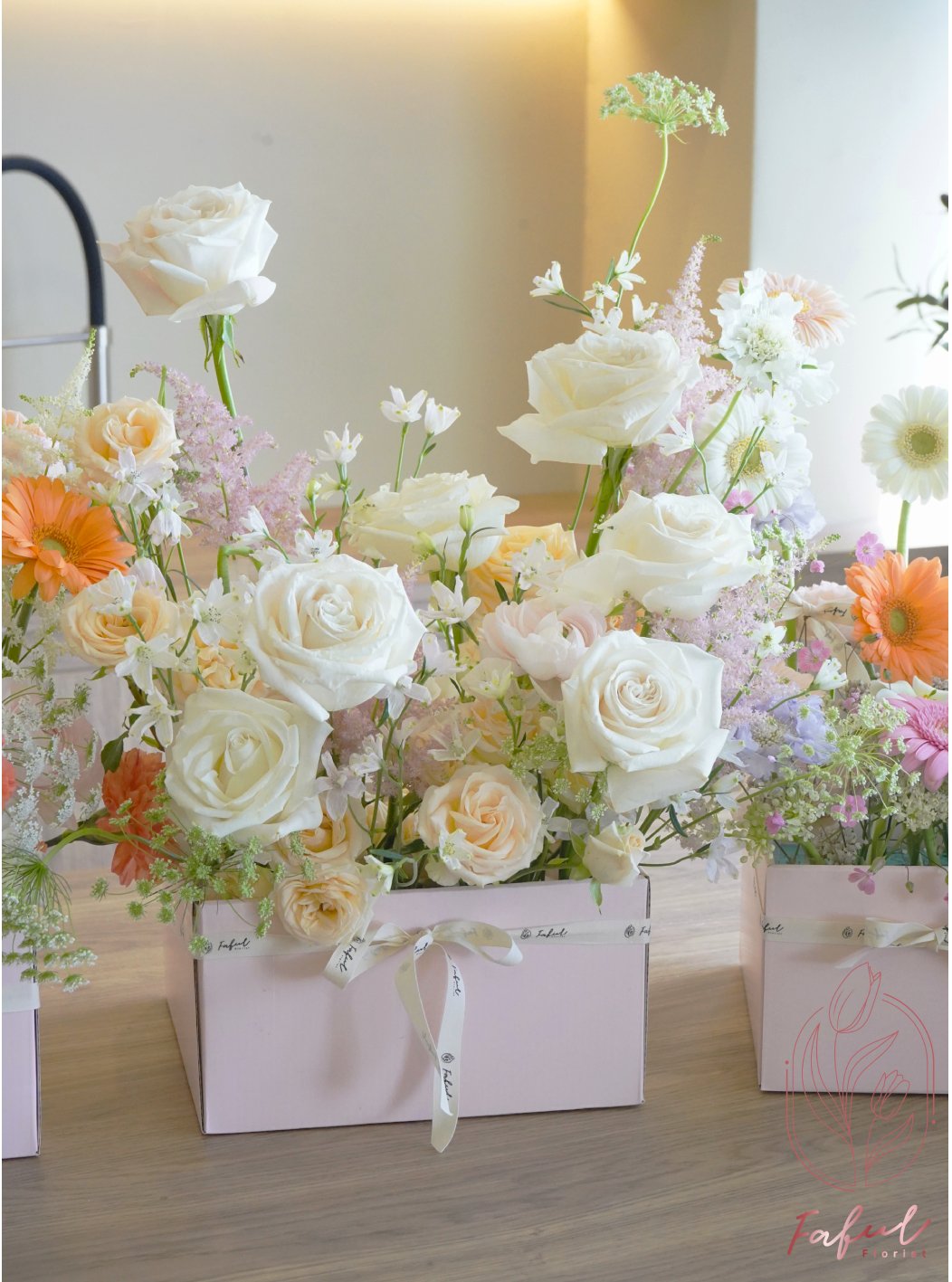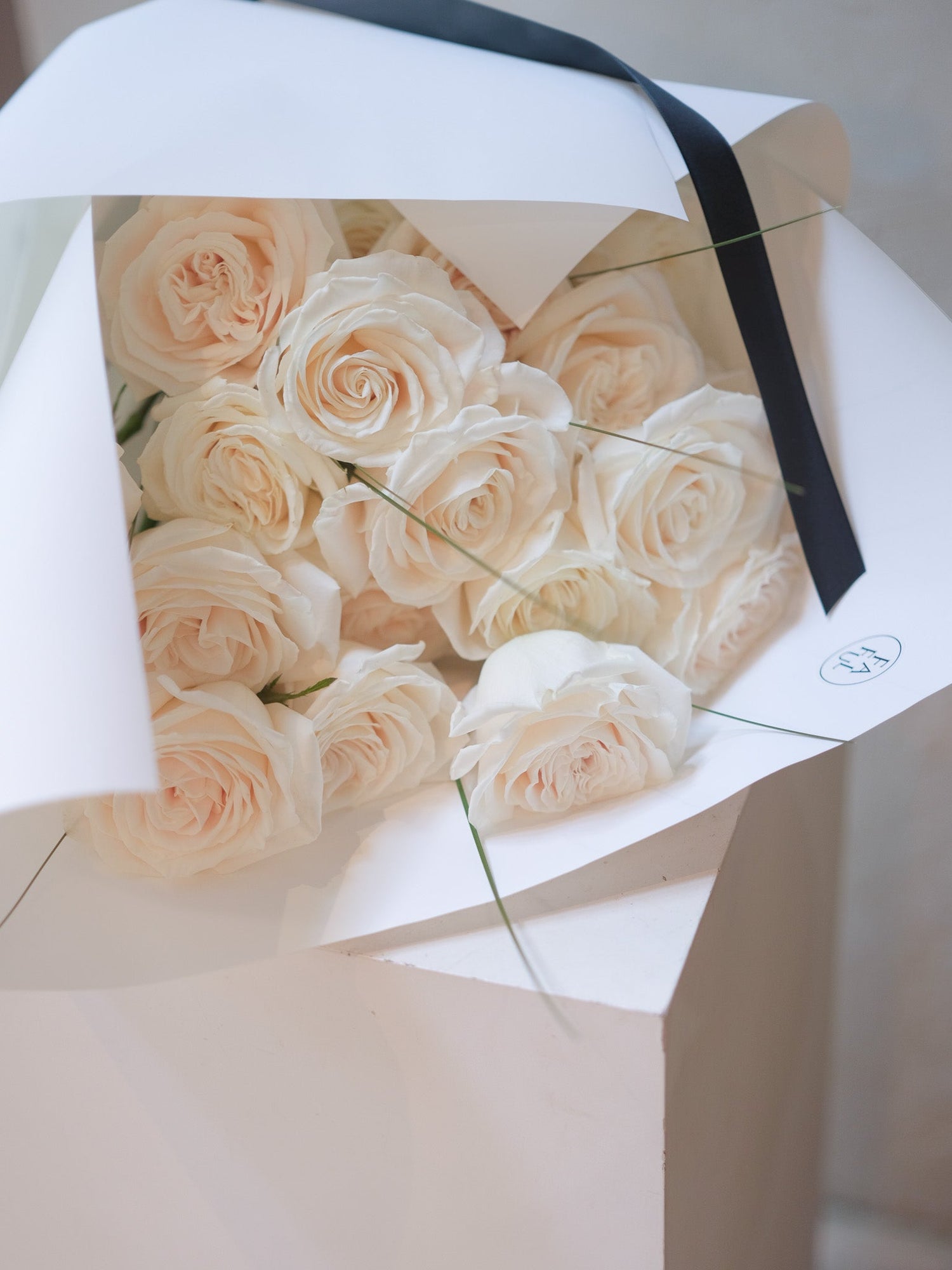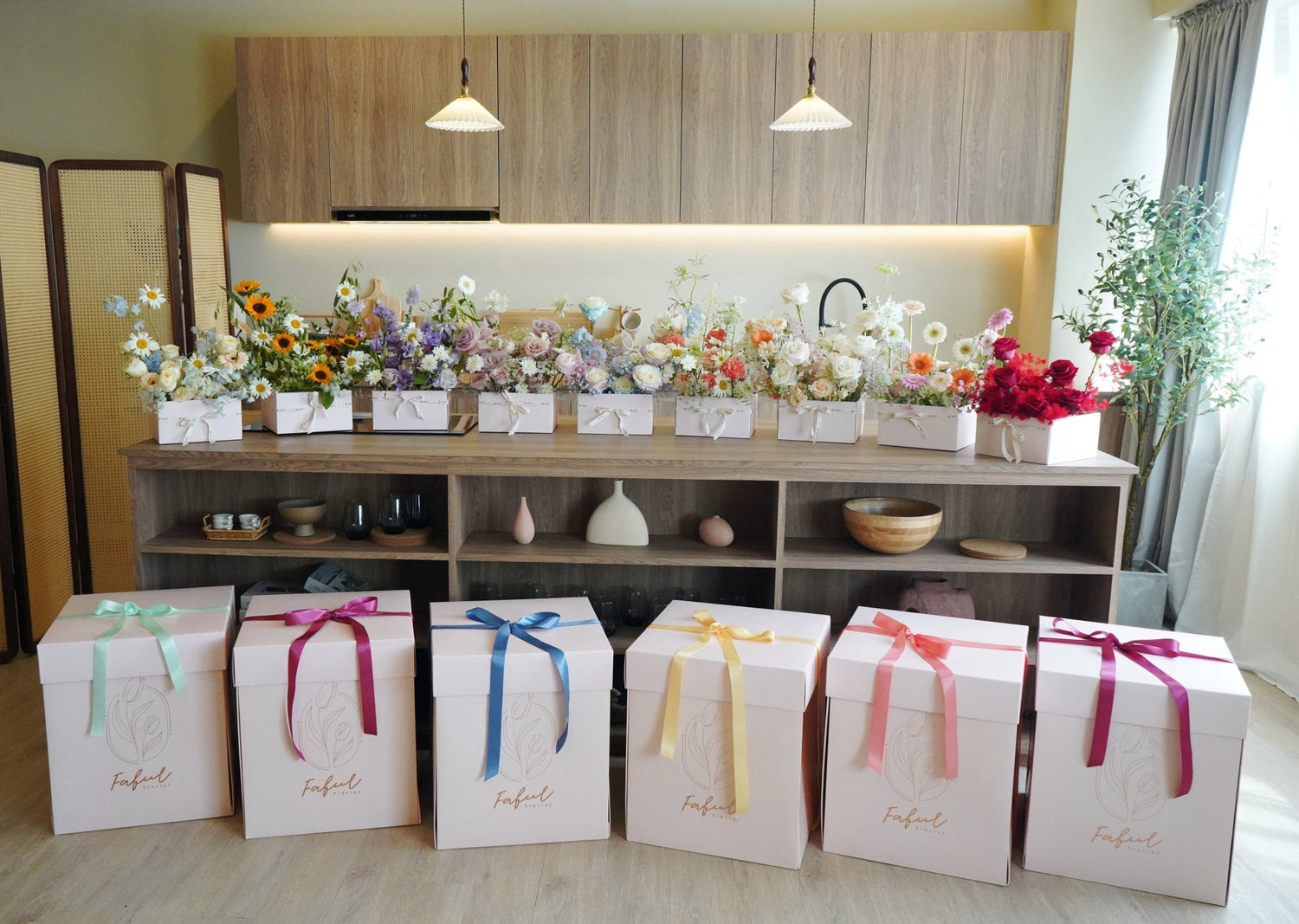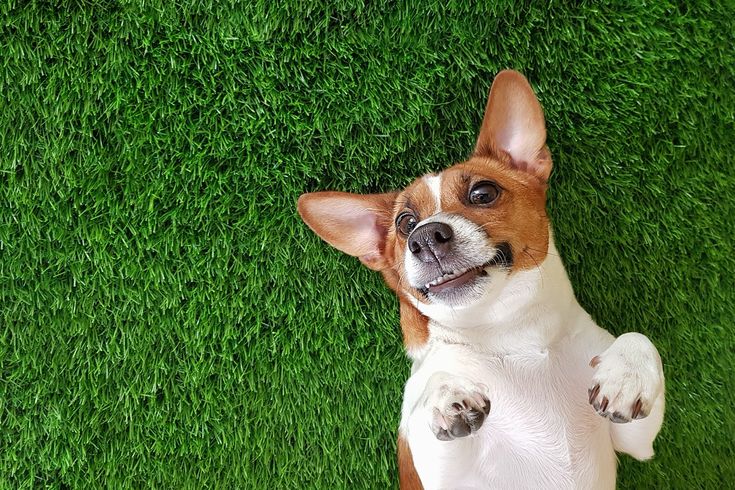
Which Flowers Are Harmless to Furkids? Recommendations for Common Pet-Safe Flowers in Hong Kong
Estimated reading time: 7 minutes
Many families enjoy adding a touch of green to their homes with fresh flowers or potted plants. However, for households with curious pets, choosing home plants requires extra caution. Many common ornamental plants, harmless to humans, can pose serious threats to pets, ranging from mild gastrointestinal upset to life-threatening conditions. This article will provide a detailed introduction to common ornamental flower species in Hong Kong that are safe for cats and dogs, helping you create a home that is both beautiful and safe for your furry friends.

Table of Contents
- Why Pay Attention to the Potential Toxicity of Plants to Pets?
- Common Dangerous Flowers Toxic to Cats and Dogs (To Be Avoided)
- Selected Recommendations: List of Pet-Friendly Flowers (Safe for Cats and Dogs)
- Tips for Creating a Pet-Friendly Flower-Viewing Environment
- Emergency Veterinary Information in Hong Kong
- Summary: Quick Reference Table for Pet-Friendly Flowers
Why Pay Attention to the Potential Toxicity of Plants to Pets?
Cats and dogs love to explore their surroundings, and they may get to know new things by nibbling, licking, or even ingesting plants. However, some flower species/plants contain toxins harmful to them. These toxins can be present in the plant's leaves, flowers, stems, roots, fruits, or even pollen.
Symptoms of pet poisoning vary widely, depending on the plant species, amount ingested, and the pet's size, breed, and health condition. Common symptoms include:
- Digestive system problems: Drooling, vomiting, diarrhea, loss of appetite, abdominal pain.
- Oral irritation: Burning sensation in the mouth, swelling of the tongue or lips, difficulty swallowing.
- Skin irritation: Redness, itching, rash at the point of contact (less common).
- Nervous system problems: Depression or hyperactivity, seizures, tremors, unsteady gait, coma.
- Cardiovascular problems: Irregular heartbeat, slow or fast heart rate, abnormal blood pressure.
- Respiratory system problems: Difficulty breathing, coughing.
- Severe cases: Liver or kidney failure, even death.
Choosing flowers and plants that are non-toxic to pets is the first line of defense in protecting their health. Even plants labeled as non-toxic can cause mild gastrointestinal upset (such as vomiting or diarrhea) if ingested in large quantities, so it's still important to monitor your pet's behavior.
Common Dangerous Flowers Toxic to Cats and Dogs (To Be Avoided)
Before introducing safe options, let's first learn about some flowering plants that are quite common in Hong Kong but are definitely toxic to cats and dogs (especially cats). It is strongly recommended that families with pets, especially cats, completely avoid keeping the following plants at home:
-
Lilies (all Lilium and Hemerocallis species): Extremely and specifically nephrotoxic (damaging to kidneys) to cats! Cat owners must be particularly vigilant. Ingesting even a very small part (such as a petal, leaf, pollen, or even licking pollen off their fur or drinking water from the vase) can cause severe acute kidney injury within a short period, with a very high risk of fatality. If you suspect your cat has had any contact (even just licking pollen), regardless of whether symptoms appear, you must seek immediate aggressive veterinary treatment within 18 hours. This is the critical window to prevent or mitigate permanent kidney damage. Lilies are considered non-toxic to dogs, but dogs should still be prevented from ingesting plant material to avoid general gastrointestinal upset. Common dangerous lily/daylily varieties include: Oriental Lily, Easter Lily, Tiger Lily, Asiatic Lily, Daylily, etc.
-
Tulips: Toxicity is mainly concentrated in the bulb, containing alkaloids that cause gastrointestinal upset, drooling, loss of appetite, central nervous system depression, and even heart problems. Leaves and flowers also have mild toxicity.
-
Daffodils: The bulb is also the most toxic part, containing lycorine, which can cause severe vomiting, diarrhea, abdominal pain, irregular heartbeat, and respiratory depression. Flowers and leaves are also toxic.
-
Hyacinths: The bulb is the most toxic part, with symptoms similar to tulips and daffodils.

-
Azaleas / Rhododendrons: The entire plant is toxic, containing grayanotoxins that affect nerve and heart function, leading to vomiting, diarrhea, drooling, weakness, seizures, low blood pressure, coma, and even death.
-
Oleander: Highly toxic plant! All parts contain cardiac glycosides, and even small amounts ingested can be fatal, affecting the heart, gastrointestinal tract, and nervous system.
-
Chrysanthemums: Contain pyrethrins, which may cause gastrointestinal upset, drooling, vomiting, diarrhea, loss of appetite, incoordination, and dermatitis. Toxicity is usually mild, but caution is still needed.
-
Poinsettia (Euphorbia pulcherrima): The claim that poinsettias are highly toxic has been confirmed by authoritative institutions to be a greatly exaggerated myth. Its milky sap contains mild irritants, most commonly causing mild and transient symptoms such as drooling, vomiting, or occasional diarrhea, and skin irritation. The risk of fatality is extremely low.
-
Hydrangea: Contains cyanogenic glycosides, which may cause vomiting, diarrhea, and depression if ingested.
-
Dieffenbachia / Dumb Cane: Contains insoluble calcium oxalate crystals, which pierce the oral mucous membranes when chewed, causing severe pain, burning sensation, drooling, swelling of the mouth, difficulty swallowing, and in severe cases, can obstruct the airway.

-
Araceae family plants (e.g., Calla Lily, Monstera, Pothos, and other foliage plants): Similar to Dieffenbachia, they contain insoluble calcium oxalates and are highly irritating to the mouth. Although this article focuses on flowers, these common houseplants also require caution.
- Amaryllis (Hippeastrum species): Amaryllis is known for its large, showy flowers and is often used for festive decorations or gifts. Common varieties belong to the Hippeastrum genus. Precautions: Contains lycorine, which is toxic to cats and dogs. Ingestion can cause vomiting, abdominal pain, tremors, and nervous system abnormalities, requiring immediate veterinary attention.

- Mint (Mentha species): Mint leaves in normal dietary amounts are not significantly toxic to cats and dogs. If large quantities are ingested or concentrated mint oil is contacted, it may lead to vomiting, diarrhea, nervous excitement, or tremors. It is recommended to prevent pets from accessing mint essential oils or ingesting large amounts of mint.
The above are just some common examples and not an exhaustive list. If you are unsure whether a plant is safe, the safest approach is to assume it is toxic and place it where your pet absolutely cannot reach it, or avoid buying it altogether. The ASPCA website provides a very detailed list of toxic and non-toxic plants for reference.

Selected Recommendations: List of Pet-Friendly Flowers (Safe for Cats and Dogs)
Here are some flowers that are easier to find in Hong Kong and are widely considered non-toxic to pets:
1. Rose
Pros: Roses, symbolizing love, come in rich colors and are extremely popular ornamental flowers. According to the ASPCA, roses themselves are non-toxic to cats and dogs. Both cut flowers and potted roses can be safely displayed.
Precautions: Although the petals and leaves are non-toxic, rose stems have thorns that can injure a curious pet's mouth, paws, or skin. It is recommended to trim off easily accessible thorns.
2. Sunflower
Pros: Cheerful sunflowers, known for their large golden-yellow flower heads, are full of vitality. The entire plant, including petals, leaves, stems, and seeds, is considered non-toxic to cats and dogs.
Precautions: Large flower heads and stems might be knocked over by curious dogs or cats. Also, while sunflower seeds are non-toxic, pets should not eat them excessively to avoid indigestion or excessive fat intake.
3. Phalaenopsis Orchid
Pros: Phalaenopsis orchids have an elegant form and a long flowering period, making them a popular choice for Chinese New Year and gifts in Hong Kong. They are recognized as a cat and dog-safe orchid variety. Other common pet-safe orchids include Dendrobium and Oncidium.
Precautions: While the orchid itself is non-toxic, the potting medium (like sphagnum moss or bark) can cause indigestion or choking if ingested by pets. Ensure the pot is stable and not easily knocked over.
4. African Violet
Pros: Small and delicate, with diverse flower colors (purple, pink, white, etc.) and velvety leaves, they are very suitable for small indoor spaces. They are completely non-toxic potted flowers for cats and dogs.
Precautions: Leaves and flowers are relatively fragile and can be easily damaged by playful pets. They have specific requirements for light and watering and need careful attention.
5. Snapdragon
Pros: The flowers have a unique shape, like a little goldfish's mouth, and come in bright colors and various heights. Snapdragons are safe for cats and dogs.
Precautions: When used as cut flowers, ensure the vase is stable. Potted plants need ample sunlight.

6. Gerbera Daisy
Pros: Large, brightly colored flowers (red, orange, yellow, pink, white) with a sunny disposition, common as cut flowers and potted plants. Gerbera daisies are non-toxic to cats and dogs.
Precautions: Cut flowers need frequent water changes to stay fresh. Potted plants require good drainage and ample light.
7. Camellia
Pros: Flowers are magnificent and noble, with single and double-petaled varieties in diverse colors, making them elegant garden or potted plants. Camellias are safe for cats and dogs.
Precautions: Camellias require specific acidic soil and a semi-shaded environment, which might require more skill to grow on balconies or indoors in Hong Kong.
8. Zinnia
Pros: Very rich in flower color, blooming continuously from summer to autumn, easy to grow, and suitable for beginners. Zinnias are safe for cats and dogs.
Precautions: Requires ample sunlight for good flowering, better suited for balcony or rooftop planting.
9. Celosia (Cockscomb)
Pros: The flower clusters have peculiar shapes, including feathery (flame-like), plumed, and crested (like a cockscomb), and are brightly colored and long-lasting. Celosia is non-toxic to cats and dogs.
Precautions: As an ornamental plant, its unique appearance might particularly attract pets' attention; monitor for excessive chewing.
10. Freesia
Pros: Soft flower colors, elegant form, and a pleasant fragrance, making them popular cut flowers. Freesias are safe for cats and dogs.
Precautions: Their fragrance might attract cats; ensure the vase is stable.
11. Petunia
Pros: Abundant flowers, a wide variety of colors, long blooming period, commonly used for flower beds, hanging baskets, or window box decorations. Petunias are considered safe for cats and dogs.
Precautions: Although non-toxic, ingesting large amounts may still cause mild gastrointestinal upset. Hanging baskets are a good option to reduce direct pet contact.
12. Wax Plant (Hoya)
Pros: Thick, waxy leaves, star-shaped flower clusters, some varieties are fragrant, a relatively shade-tolerant indoor vine. Wax plants are safe for cats and dogs.
Precautions: Their trailing nature might attract cats to play; it's advisable to place them high up or in hanging baskets.
Important Note: Please note that "non-toxic" or "safe" means these plants do not contain known specific chemical toxins that cause severe systemic poisoning. However, this absolutely does not mean they can be treated as pet food or can be freely chewed on. Any plant (even non-toxic ones), if ingested in large quantities by a pet, may cause mild gastrointestinal upset (such as vomiting or diarrhea) due to its physical properties (e.g., indigestible coarse fiber) or individual sensitivity. Therefore, measures (such as placing them high up) should still be taken to prevent pets from excessive contact or ingestion. When purchasing plants, be sure to check if the label is clear and correct. If unsure, consult the store staff or verify their safety for pets through reliable sources (such as the ASPCA website).

Tips for Creating a Pet-Friendly Flower-Viewing Environment
-
Strategic Placement: Place potted plants or vases in high places that are difficult for pets to reach, such as high shelves, hanging baskets, or pet-restricted areas.
-
Stable Containers: Use heavy, hard-to-tip-over pots or vases, or place weights at the bottom of pots to increase stability and prevent them from being knocked over by curious pets.
-
Clean Up Debris: Promptly clean up fallen petals, leaves, or withered parts to reduce the chances of pets coming into contact with and ingesting them.
-
Avoid Dangerous Additives: Do not use fertilizers, pesticides, or preservatives that are harmful to pets. Preservatives in cut flower water can also be harmful to pets; it's best to use only plain water and change it frequently.
-
Provide Alternatives: Offer pets safe chew toys or cat grass (usually oat, wheat, or barley grass) to divert their attention from ornamental plants.
-
Supervision and Training: When introducing new plants, closely observe your pet's reaction. If you find them particularly interested in a plant and trying to chew it, stop them immediately and consider moving the plant. You can try spraying a scent that pets dislike (like diluted lemon juice or a special repellent) around the pot (be careful not to spray directly on the plant), but the effect varies with pets.
- Check Flower Bouquets: When receiving flower bouquets as gifts, be sure to check if they contain flowers toxic to pets (especially lilies!). If in doubt, it's best to place the bouquet where pets absolutely cannot reach it, or only keep the parts confirmed to be safe.
Emergency Veterinary Information in Hong Kong:
If you suspect your pet has been poisoned, the most crucial step is to immediately contact your veterinary clinic or the nearest 24-hour animal hospital/emergency center directly.
-
Your Regular Veterinary Clinic: During office hours, they know your pet's medical history best. Please save their phone number in advance.
-
SPCA Hong Kong: Provides veterinary services. For emergency assistance (including non-office hours), you must first call their 24-hour hotline at 2711 1000. The operator will assess the situation and refer you to a veterinary nurse or veterinarian, or arrange for emergency services at their designated center.
-
CityU Veterinary Medical Centre: A large animal hospital with an Intensive Care Unit (ICU) that provides 24-hour veterinary emergency services. Their 24-hour emergency hotline is 3650 3200.
-
Private 24-Hour Veterinary Emergency Hospitals: Hong Kong has several private 24-hour animal hospitals that offer emergency services (e.g., VEC, The Ark, AMAH, Concordia Pet Care, etc.). Pet owners are advised to inquire in advance and record the contact information of available 24-hour emergency veterinary clinics near their homes.
- Veterinary Surgeons Board of Hong Kong (VSBHK): This is a veterinary registration and regulatory body, not an emergency service or poison control consultant. You can check a veterinarian's registration status through its website.
Strongly Recommended: Please be sure to prepare a list in advance containing the contact information for your regular veterinary clinic and at least one nearby 24-hour emergency animal hospital's phone number and address, so you can seek help quickly in an emergency.

Summary: Quick Reference Table for Pet-Friendly Flowers
For your quick reference, here is a summary of some common flowers that are generally considered non-toxic to pets (cats and dogs):
| Flower Name (Chinese) | Flower Name (English) | Safety for Cats & Dogs | Main Precautions |
|---|---|---|---|
| 玫瑰 | Rose | Safe | Beware of thorns on stems |
| 向日葵 | Sunflower | Safe | Plant is large, ensure stability; do not overfeed sunflower seeds |
| 蝴蝶蘭 | Phalaenopsis Orchid | Safe | Beware of ingestion of potting medium |
| 非洲紫羅蘭 | African Violet | Safe | Plant is relatively fragile |
| 金魚草 | Snapdragon | Safe | Ensure vase/pot is stable |
| 非洲菊 / 太陽花 | Gerbera Daisy | Safe | Needs good drainage and light |
| 山茶花 | Camellia | Safe | Higher requirements for growing conditions |
| 百日草 / 百日菊 | Zinnia | Safe | Needs ample sunlight |
| 雞冠花 | Celosia | Safe | Shape might attract pets to chew |
| 小蒼蘭 / 香雪蘭 | Freesia | Safe | Fragrance might attract cats |
| 矮牽牛 | Petunia | Safe | Large ingestion may cause mild discomfort |
| 球蘭 / 臘蘭 | Wax Plant | Safe | Trailing nature might attract cats to play |
Disclaimer: The information provided in this article is for reference only and aims to raise pet owners' awareness of plant safety. There is a wide variety of plants, and individual pet reactions may differ. The most authoritative sources of information should be professional veterinarians or reliable animal poison control centers (like the ASPCA). Before introducing any new plant into a home with pets, it is recommended to re-verify its safety.
We hope this detailed guide to "pet-friendly flowers" helps you enjoy the fun of gardening while also creating a safe, comfortable, and loving home for your furry companions!
To learn more about flower information, feel free to visit our online florist and explore a whole new world of flowers!





